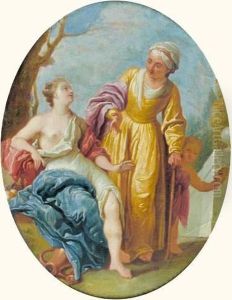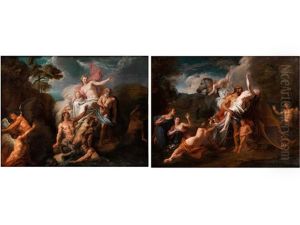Samuel Masse Paintings
Samuel Massé, born in 1672 in Tours, France, is a somewhat elusive figure in the annals of art history, with details of his death remaining unclear. His career, however, is marked by his role as a painter during the Baroque period, a time characterized by dramatic expression and elaborate ornamentation. Massé's contributions, though not as widely recognized as those of his contemporaries, offer insight into the stylistic transitions and cultural contexts of his time.
Massé's artistic journey began in his hometown, but it wasn't long before his ambitions led him to Paris, the vibrant heart of French art and culture. In Paris, he would have been exposed to the leading artistic figures and movements of his era, absorbing influences and honing his craft. His work primarily consisted of religious subjects, portraits, and occasionally, genre scenes, reflecting the Baroque's fascination with the divine, the human condition, and the details of everyday life.
Despite the scarcity of records regarding his commissions and the locations of his works, it is known that Massé's style evolved over time, showcasing his ability to adapt to the changing tastes and artistic demands of the early 18th century. His paintings are noted for their delicate handling of light and shadow, a testament to the influence of Caravaggio and the Italian Baroque painters, as well as a sensitivity to the French classical tradition.
Massé's contributions extend beyond his paintings. He was involved in the artistic community of his time, engaging with the intellectual and social currents that shaped the Baroque period in France. His interactions with other artists, patrons, and thinkers would have played a role in the development of his artistic philosophy and style.
The exact details of Samuel Massé's death remain a mystery, with historical records providing little information on his later life and final years. Despite this, his work continues to be of interest to art historians and collectors, offering a window into the complexities and nuances of Baroque art in France. Through the surviving pieces of his oeuvre, Samuel Massé remains a figure of fascination, representing the lesser-known yet equally talented artists of his generation.

